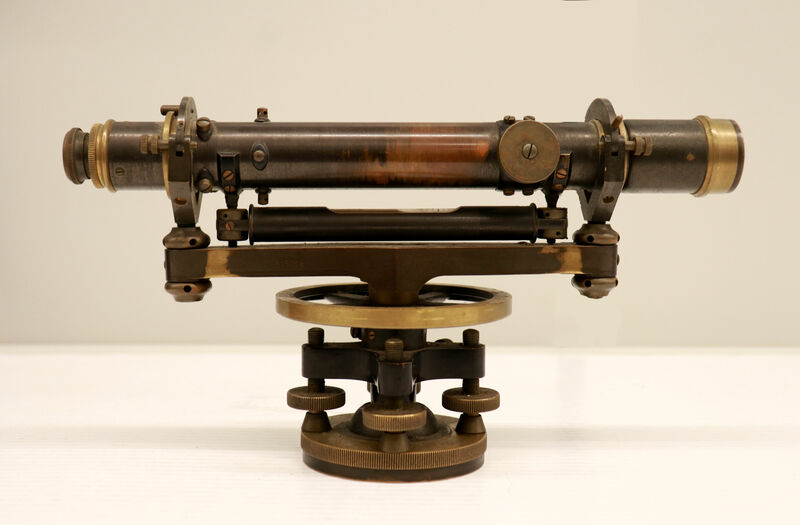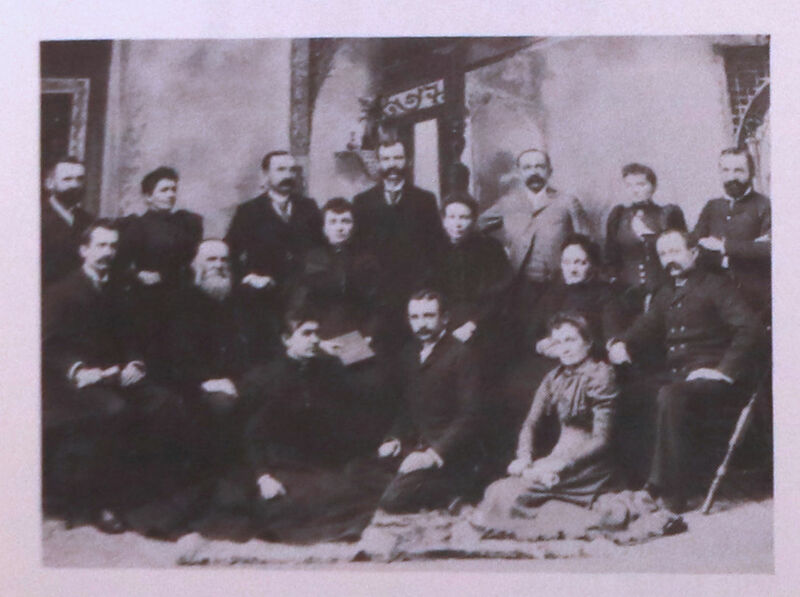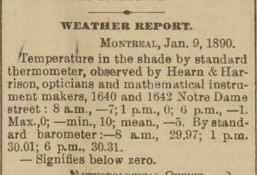Introduction
by Victoria JL Fisher
In the 18th and early-mid 19th century, Canada’s instrument makers were concentrated along the east coast and in ports such as Quebec City and Toronto. There, they provided necessary repair and manufacture services to maritime navigational instruments and the infrastructure of these active seaports—like the repair of lighthouse mechanisms. Joseph Roper (active 1893-1915) was a later entry to this group, but earlier examples include Halifax maker Robert H. Cogswell (active 1865-1906) and a dynasty of makers in Saint John, New Brunswick, the Hutchinsons (active 1817-1877).
As the 19th century went on, makers established themselves in Canada's growing centres of government, including Montreal, Toronto and Ottawa.
Government Links
In the mid- to late 19th century, instrument makers in central Canada—Montreal, Ottawa and Toronto—were often engaged in constructing surveying equipment that would assist with the enormous government-led efforts of mapping and measuring ongoing in the later part of the 19th century, for example with the Dominion Land Survey. People like Édouard Deville who was in charge of the Canadian survey effort and designed many instruments for it, and Toronto instrument maker James Foster, were centrally engaged in these projects.
In both maritime and survey work, makers therefore maintained strong links to government activities and investment. Another route for government involvement was through the development of public education in the country. A.F. Potter was associated with or in charge of the Upper Canada (later Ontario) government’s educational equipment purchases from 1858 to at least 1868.
Family Ties
19th century makers, both immigrants and Canadian-born, often relied on family ties for training and support. Joseph Roper’s son worked for the family business; A.F. Potter worked briefly with his brother Charles; Hearn & Harrison, run largely by Susan Hearn, emerged from a blended family, spanning two marriages and beyond. The Arthur Pequegnat Clock Co. was begun by the eldest brother of a large entrepreneurial family. Such skilled work required highly specialised knowledge and good connections, favouring children apprenticed from a young age.
Diversification
Most early Canadian instrument makers were engaged in a wide range of activities. As well as offering repairs as a major component of their work, most made precision instruments only a small portion of their work. This was a necessary move in a limited market, but also points to the interrelationship of precision skills: cabinetmakers, watchmakers, opticians and jewellers often repurposed their training into the manufacture of precision instruments.
The Swiss Pequegnat family, from a watchmaking background, began a bicycle-making firm advertising bicycles “built like a watch” before converting to clocks as sales of bicycles dropped. Many companies began as jewellers or opticians and maintained that business as a base—in Toronto, Consolidated Optical began as the Cohen Bros.' jewellery and spectacle making company, adding first ophthalmic and then surveying and optical scientific instruments before selling the instrument business and reverting to the optician business. Joseph Roper was a jeweller and engraver alongside his maritime businesses. Others, such as A.F. Potter and his brother, Charles Potter, catered to the increasingly lucrative education market.
Scientific Community
Alongside their economic activities, 19th century Canadian makers were often progenitors of the budding urban scientific community. A.F. Potter displayed his instruments at the Toronto Mechanics’ Institute Exhibition in 1865. Charles Potter, his brother, and sometime business partner, offered his shop as an early host of the Toronto Astronomical Club, the precursor to the Royal Astronomical Society of Canada. James Foster was in 1890 a member of the Toronto Recreative Science Club alongside amateur astronomers, university professors and medical doctors. In Montreal, Hearn & Harrison referred to itself in the 1880s as a “Scientific Institute” and was taking daily meteorological observations which were published in the newspaper.
With scientific research still in its infancy in Canada’s cities, scientific and precision makers were among the most scientific people in the country for many years. At least one, Kingston clockmaker Nathan Fellowes Dupuis, converted his training as a maker into first a teaching and then leadership role in the scientific and engineering departments at Queen’s University. More commonly, as scientific work in universities and companies grew local scientific makers were engaged as general suppliers—James Foster and Charles Potter’s companies both supplied various departments at the University of Toronto, for example.
With the turn of the new century, and particularly after the First World War, these makers were increasingly engaged to make instruments for researchers, opening up a new stage in the manufacture of instruments in Canada.


